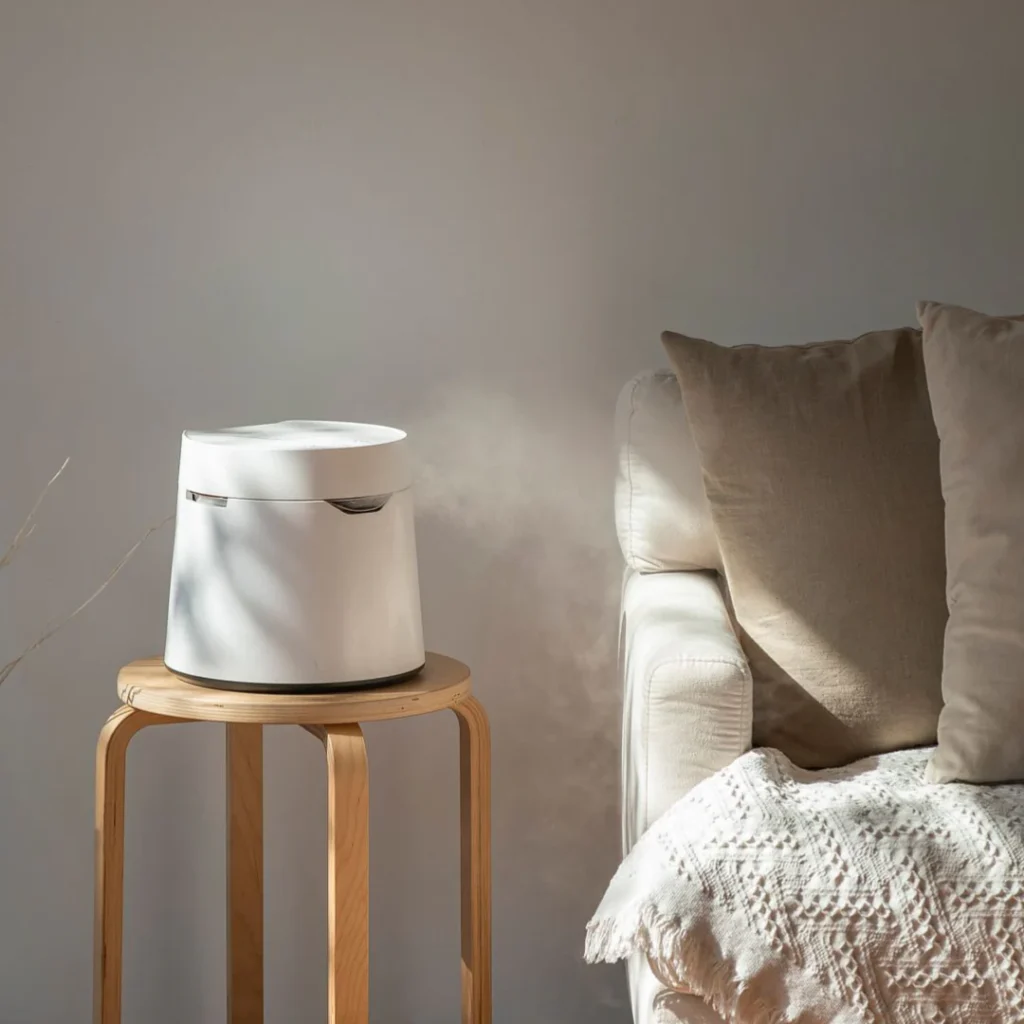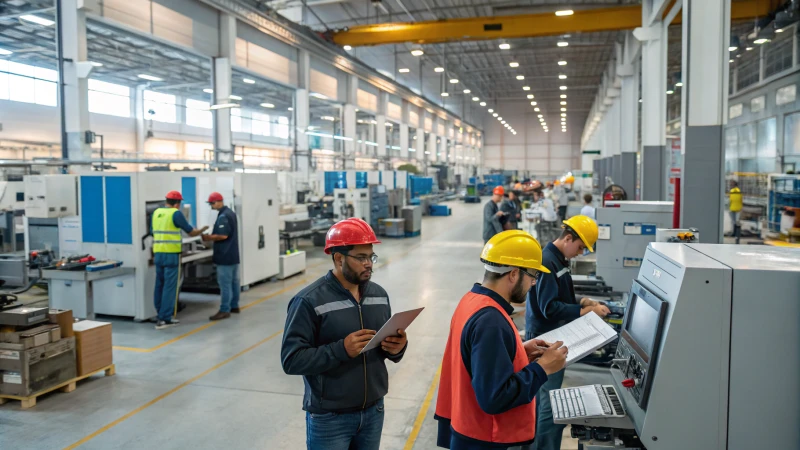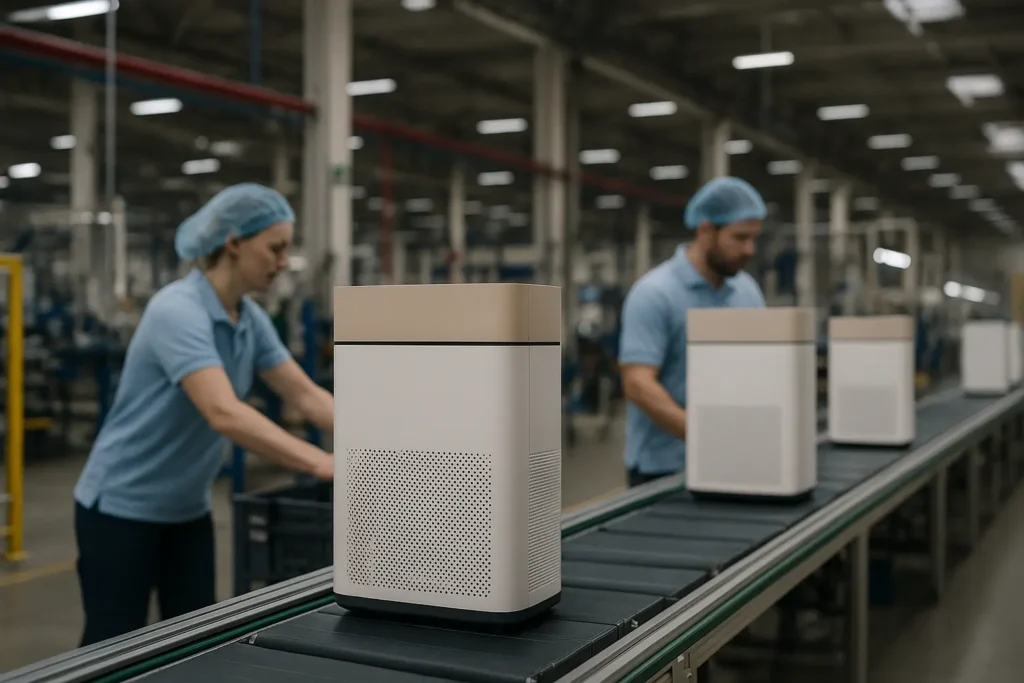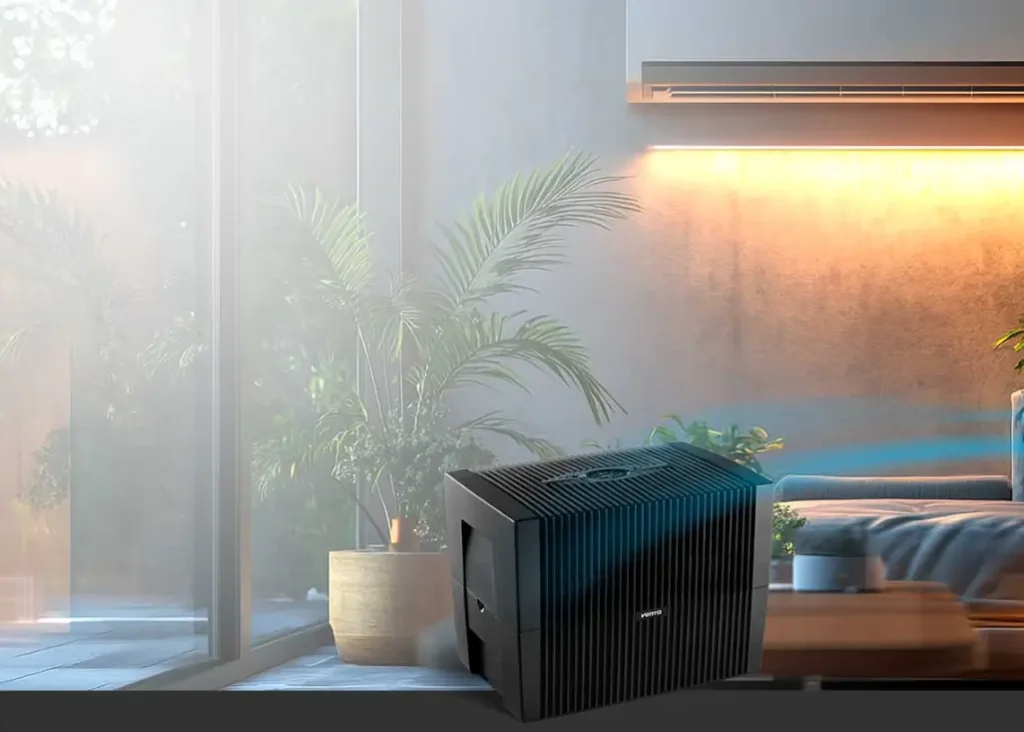
Todos nós queremos respirar ar puro em casa, mas como podemos ter a certeza de que os nossos purificadores de ar estão realmente a fazer o seu trabalho?
Para medir eficazmente o desempenho do purificador de ar, concentre-se em métricas-chave como CADR (Clean Air Delivery Rate), níveis de ruído e tecnologias avançadas, tais como CCM (Medida de captura limpa). Estes factores proporcionam uma compreensão abrangente da eficiência e eficácia de um purificador.
Enquanto CADR Os níveis de ruído e de ruído oferecem um ponto de partida, mas aprofundar as tecnologias avançadas e as métricas de desempenho pode proporcionar uma avaliação mais pormenorizada. Nas secções seguintes, iremos explorar estes aspectos em pormenor, ajudando-o a tomar decisões informadas.
Um CADR mais elevado significa um melhor desempenho do purificador de ar.Verdadeiro
O CADR mede o volume de ar filtrado por minuto; valores mais elevados indicam uma remoção mais eficiente dos poluentes.
Como é que CADR Impacto na eficácia do purificador de ar?
Tem curiosidade em saber o que torna um purificador de ar verdadeiramente eficaz? Talvez tudo se resuma a CADR!
CADRA taxa de fornecimento de ar limpo, ou Clean Air Delivery Rate, é crucial para determinar a eficácia de um purificador de ar. Ela mede o volume de ar filtrado fornecido pelo purificador por minuto. Um valor mais elevado CADR indica um melhor desempenho, em particular na remoção de poluentes específicos como o fumo, o pólen e o pó dos ambientes interiores.
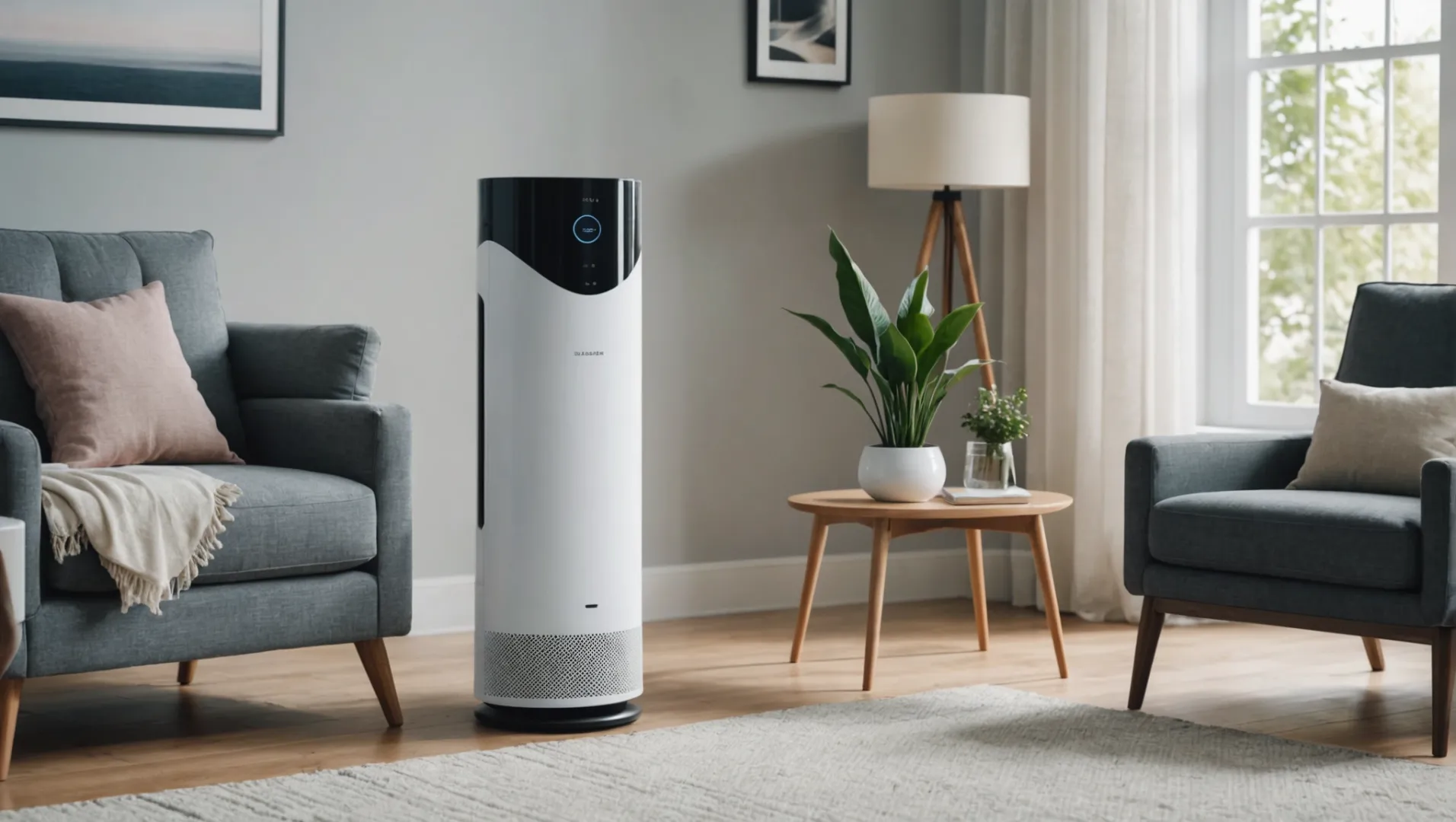
Compreensão CADR e a sua importância
CADRA taxa de entrega de ar limpo, ou Clean Air Delivery Rate, é uma métrica utilizada para avaliar a eficácia com que um purificador de ar limpa o ar numa determinada divisão. Esta taxa é determinada medindo a quantidade de ar que é filtrada de partículas específicas, como fumo, pó e pólen, num determinado período.
| Tipo de poluente | Descrição |
|---|---|
| Fumo | Representa o tamanho mais pequeno de partícula que um purificador de ar pode tratar eficazmente. |
| Poeira | Indica a limpeza geral do ar e a capacidade do purificador de ar para remover partículas maiores. |
| Pólen | Mede a eficiência na captura de alergénios transportados pelo ar. |
Um maior CADR significa uma filtragem mais eficiente. Por exemplo, se estiver a sofrer de alergias, deve optar por um purificador de ar com um valor elevado de CADR para pólen, para garantir que remove eficazmente estes alergénios do seu espaço.
CADR vs. Tamanho da divisão
Selecionar um purificador de ar com um CADR adequado ao tamanho da divisão é essencial. Geralmente, quanto maior for o CADR quanto maior for a divisão que pode purificar eficazmente. Utilizar um purificador com um número CADR do que o necessário para o tamanho da divisão pode resultar numa limpeza inadequada do ar.
Equilíbrio CADR com níveis de ruído
Embora um elevado CADR é desejável para uma purificação rápida e eficiente, mas muitas vezes vem acompanhada de níveis de ruído mais elevados devido às velocidades mais altas da ventoinha. Marcas como a HisoAir inovaram neste domínio com tecnologias que equilibram elevado CADR com redução de ruído1. Isto significa que não tem de sacrificar a paz e o sossego em troca de ar limpo.
Tecnologias avançadas que melhoram CADR
Alguns purificadores de ar modernos utilizam tecnologias de filtragem avançadas como CCM (Clean Capture Measure) para melhorar ainda mais o seu desempenho. CCM permite uma maior longevidade e eficiência dos filtros, contribuindo para um nível elevado e sustentado de CADR ao longo do tempo. Este facto não só ajuda a manter a qualidade do ar, como também reduz os custos de manutenção a longo prazo.
Um CADR mais elevado significa um melhor desempenho do purificador de ar.Verdadeiro
O CADR mede o volume de ar filtrado; valores mais elevados indicam uma maior eficácia.
O CADR baixo é adequado para divisões grandes.Falso
Um CADR baixo pode não limpar adequadamente o ar em espaços maiores, reduzindo a eficácia.
Porque é que o nível de ruído é um fator importante?
Já se perguntou porque é que o nível de ruído é um aspeto crucial dos purificadores de ar? É mais do que apenas os decibéis.
O nível de ruído dos purificadores de ar tem um impacto significativo no conforto do utilizador e na eficiência operacional. O ruído elevado pode impedir a utilização contínua, enquanto os níveis de ruído baixos garantem o conforto, especialmente em quartos ou escritórios. O equilíbrio entre o ruído e o desempenho é fundamental para um purificador de ar eficaz.
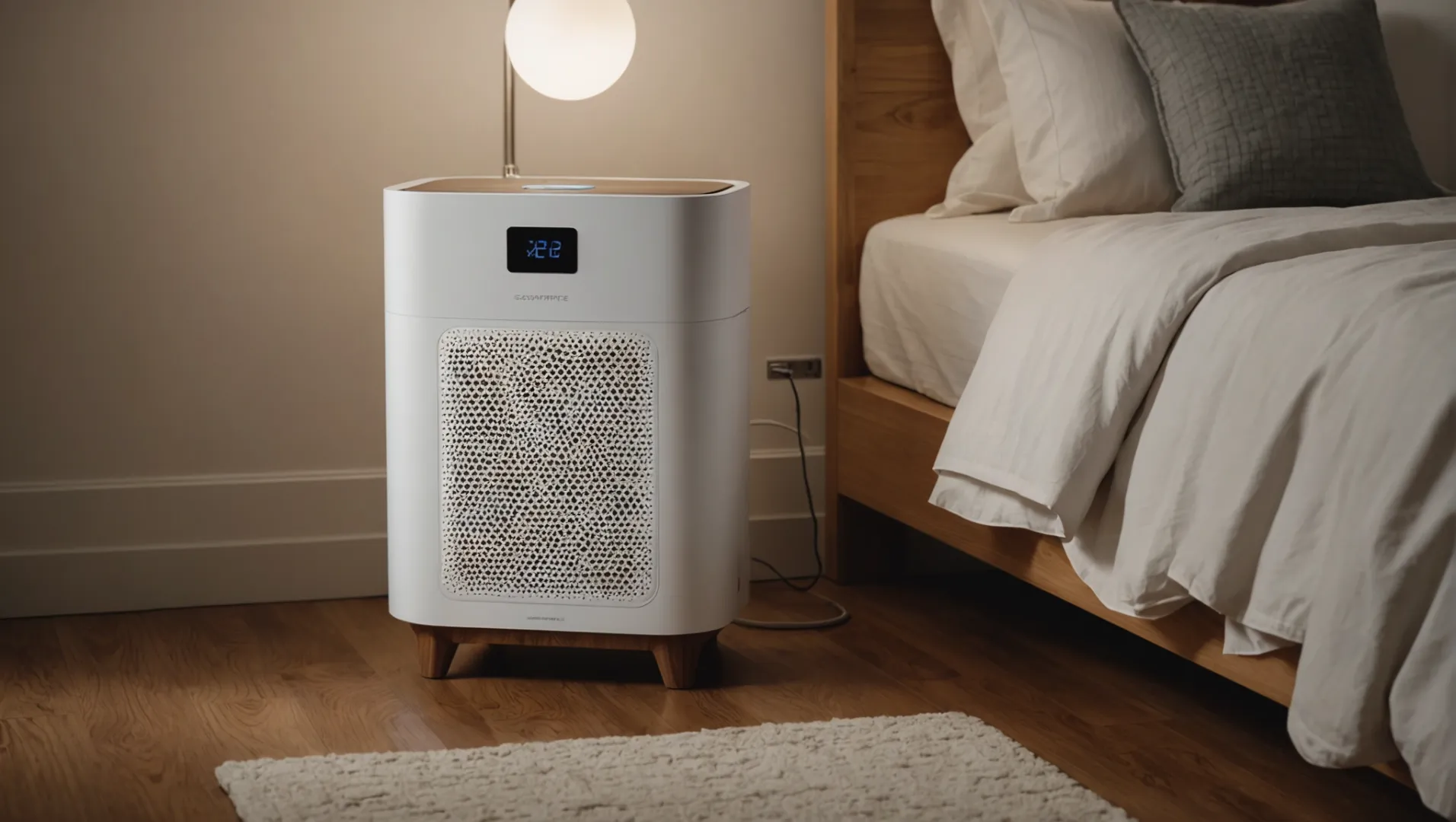
A importância do nível de ruído na vida quotidiana
Ao selecionar um purificador de ar, o nível de ruído é frequentemente ignorado, apesar do seu impacto significativo na vida quotidiana. Imagine colocar um purificador de ar no seu quarto que faz um zumbido mais alto do que o de um frigorífico. Isto pode perturbar o sono, causando desconforto e insatisfação. Um dispositivo mais silencioso garante o seu funcionamento sem intrusão, tornando-o adequado para utilização do quarto2.
Equilíbrio entre desempenho e conforto
Um equívoco comum é que os purificadores de ar de alto desempenho produzem inerentemente mais ruído devido aos seus motores e ventiladores potentes. No entanto, avanços como tecnologia de cancelamento de decibéis desafiam esta noção. Marcas como a HisoAir foram pioneiras nesta tecnologia, criando unidades que mantêm elevadas Taxas de Fornecimento de Ar Limpo (CADR), mantendo o ruído no mínimo. Esta tecnologia permite aos utilizadores usufruir dos benefícios de uma potente limpeza do ar sem comprometer o conforto.
Nível de ruído e caudal de ar
Normalmente, um maior caudal de ar significa níveis de ruído mais elevados, o que constitui um desafio para os fabricantes. No entanto, algumas empresas conseguiram conceber modelos que optimizam tanto o fluxo de ar como os níveis de ruído. Por exemplo, os modelos da HisoAir utilizam elementos de design inovadores para garantir uma circulação de ar potente com uma produção de som mínima.
Avaliação dos níveis de ruído
Ao avaliar a adequação de um purificador de ar ao seu espaço, verifique a classificação de decibéis fornecida pelos fabricantes. Como regra geral, um purificador de ar deve funcionar abaixo dos 50 decibéis nas zonas de dormir. Segue-se um guia simples para compreender os níveis de ruído:
| Nível de decibéis | Nível de ruído percebido |
|---|---|
| 30 dB | Sussurro |
| 40 dB | Biblioteca tranquila |
| 50 dB | Ruído de escritório moderado |
| 60 dB | Conversa normal |
Compreender estas métricas ajuda a escolher um purificador de ar que equilibre a eficiência da limpeza com o conforto, garantindo que não sacrifica a paz pelo desempenho.
Os elevados níveis de ruído impedem a utilização do purificador de ar.Verdadeiro
Os purificadores de ar ruidosos podem perturbar o sono e reduzir o conforto do utilizador.
A tecnologia de cancelamento de decibéis aumenta o ruído.Falso
Esta tecnologia reduz o ruído, mantendo o desempenho do purificador de ar.
Qual é o papel da tecnologia de cancelamento de decibéis?
Imagine desfrutar de ar limpo e fresco em casa sem o incómodo do zumbido alto do seu purificador de ar.
A tecnologia de cancelamento de decibéis minimiza o ruído nos purificadores de ar de elevado desempenho, assegurando um ambiente interior mais silencioso e confortável. Esta tecnologia permite que os purificadores de ar funcionem eficientemente sem o ruído perturbador tipicamente associado a um caudal de ar potente, tornando-os mais adequados para utilização doméstica.
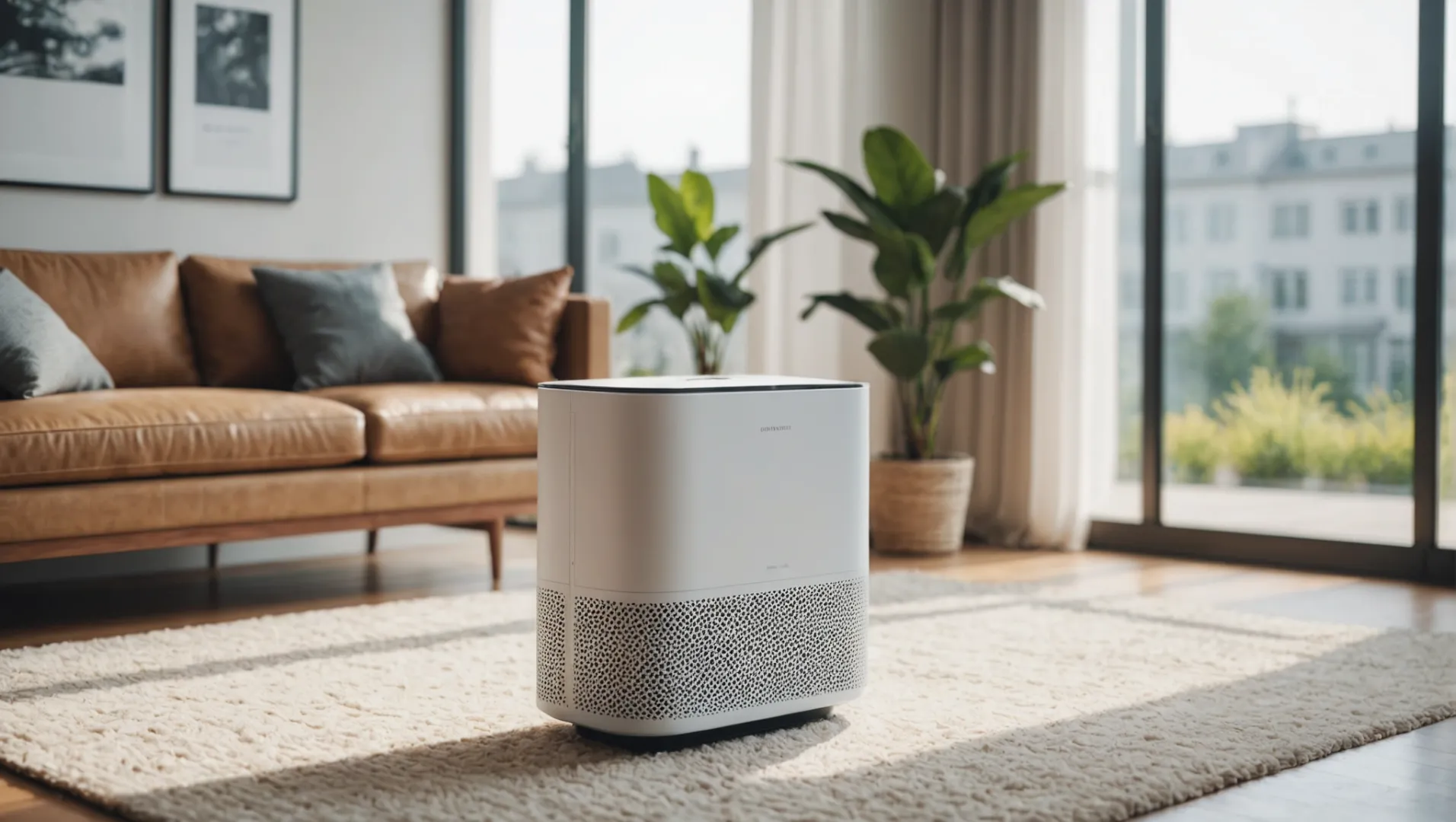
Compreender a tecnologia de cancelamento de decibéis
A tecnologia de cancelamento de decibéis é uma inovação de ponta que reduz significativamente o ruído produzido pelos purificadores de ar. Funciona através da emissão de ondas sonoras que são exatamente o oposto (antifase) do ruído gerado pelo aparelho. Quando estas ondas sonoras colidem, anulam-se mutuamente, conduzindo a um funcionamento mais silencioso. Este processo é particularmente benéfico em ambientes onde o silêncio é valorizado, como em casas ou escritórios.
Benefícios do cancelamento de decibéis nos purificadores de ar
Uma das principais vantagens da tecnologia de cancelamento de decibéis é a capacidade de manter um nível elevado de CADR3 sem aumentar os níveis de ruído. CADRA taxa de fornecimento de ar limpo, ou Clean Air Delivery Rate, é uma métrica crucial que indica a rapidez com que um purificador de ar consegue limpar uma divisão de partículas transportadas pelo ar. Normalmente, uma maior CADR significa mais fluxo de ar, o que pode levar a um aumento do ruído. No entanto, o cancelamento de decibéis atenua este problema, permitindo um elevado desempenho e um funcionamento silencioso.
A HisoAir, por exemplo, integrou o cancelamento de decibéis nos seus produtos, tirando partido de mais de 20 anos de experiência para desenvolver alguns dos purificadores de ar mais silenciosos e eficientes disponíveis. Esta tecnologia não só aumenta o conforto do utilizador, como também se alinha com as exigências do estilo de vida moderno, em que a paz e a tranquilidade são altamente valorizadas.
Um olhar sobre as tendências futuras
À medida que cresce a procura dos consumidores por aparelhos mais silenciosos, é provável que o papel da tecnologia de cancelamento de decibéis se expanda. Espera-se que mais fabricantes adoptem esta tecnologia, não apenas em purificadores de ar, mas em vários aparelhos domésticos. Esta mudança facilitará um novo padrão de vida em que o elevado desempenho já não se faz à custa do conforto.
Comparação de níveis de ruído
| Marca | Nível de ruído (dB) | CADR (m³/h) | Caraterísticas especiais |
|---|---|---|---|
| HisoAir | 25 dB | 350 | Cancelamento de decibéis |
| Marca X | 45 dB | 300 | Funcionamento standard |
| Marca Y | 50 dB | 320 | Filtragem melhorada |
Esta tabela mostra como o cancelamento de decibéis pode reduzir significativamente os níveis de ruído, mantendo ou mesmo melhorando o desempenho do purificador de ar.
A tecnologia de cancelamento de decibéis oferece uma mistura harmoniosa de eficiência e serenidade, tornando-a um aspeto essencial dos purificadores de ar modernos.
O cancelamento de decibéis reduz o ruído do purificador de ar.Verdadeiro
O cancelamento de decibéis emite ondas sonoras antifásicas para cancelar o ruído.
Um CADR mais elevado aumenta os níveis de ruído do purificador de ar.Falso
O cancelamento de decibéis permite um CADR elevado sem aumentar o ruído.
Como pode CCM Influenciar a longevidade do filtro e a poupança de custos?
Descubra como CCM não só aumenta a vida útil do filtro como também reduz os custos.
CCM (Clean Capture Measure) aumenta a longevidade do filtro, capturando mais partículas, reduzindo assim a frequência de substituição e os custos associados. Esta métrica ajuda a avaliar a eficiência a longo prazo e os benefícios económicos dos purificadores de ar, tornando-a uma consideração crucial para os consumidores.
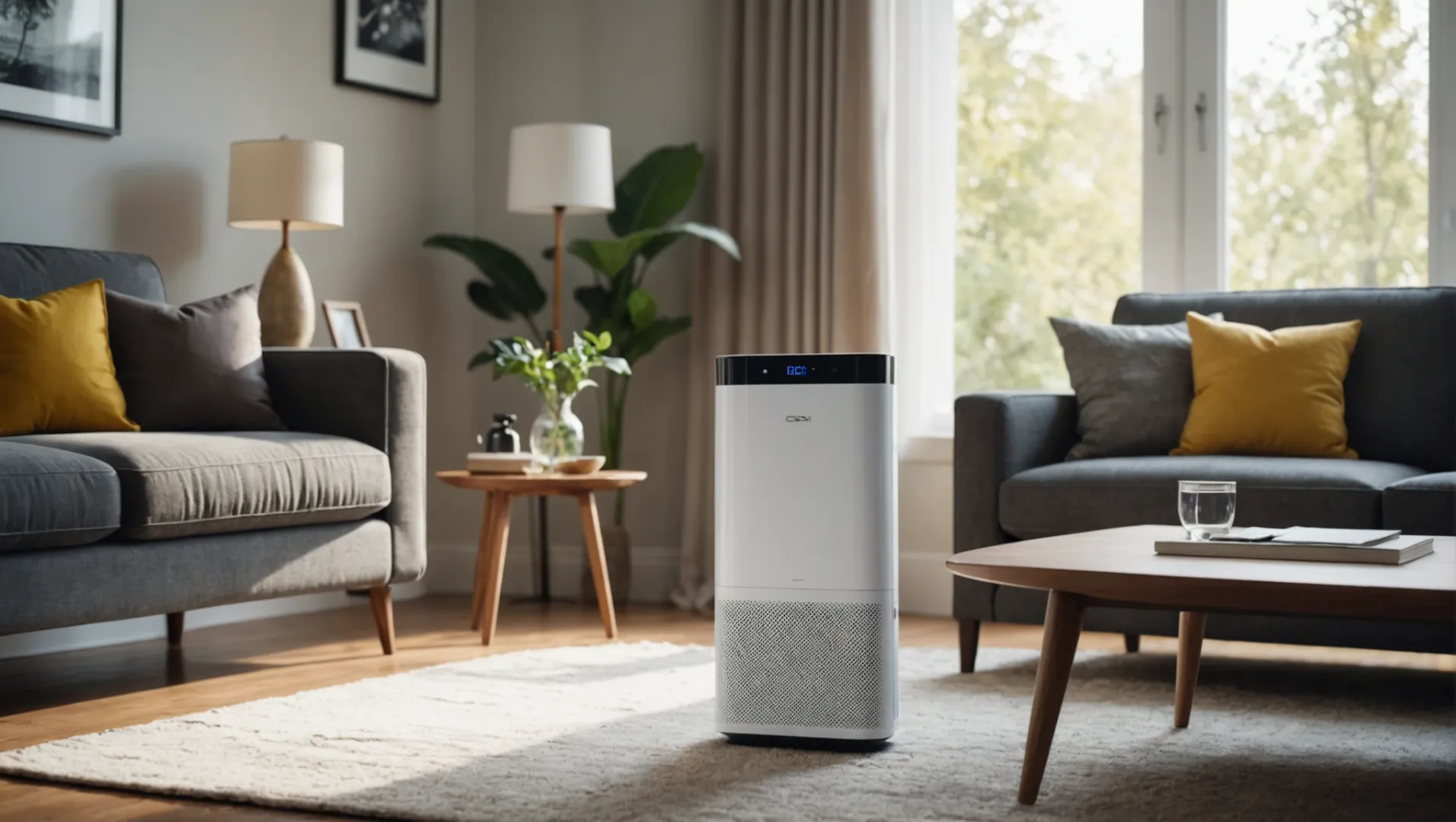
Compreensão CCM em Purificadores de ar
CCMou Clean Capture Measure, é uma métrica emergente que está a revolucionar a forma como os consumidores avaliam o valor a longo prazo dos purificadores de ar. Ao contrário das métricas tradicionais, como CADRque se centra na velocidade de purificação do ar, CCM realça a capacidade do filtro para captar e reter partículas ao longo do tempo. Isto significa que os filtros com maior CCM As classificações podem captar mais partículas antes de necessitarem de substituição, o que conduz a uma maior longevidade e a uma poupança de custos.
Longevidade através de uma maior retenção de partículas
O princípio fundamental do CCM é a sua capacidade de reter maiores volumes de contaminantes. Os purificadores de ar com CCM As classificações, como as desenvolvidas por empresas com tecnologias avançadas como a HisoAir, estão equipadas com filtros concebidos para reter mais pó, pólen, fumo e outras partículas transportadas pelo ar. Esta capacidade acrescida atrasa o momento em que os filtros ficam obstruídos e ineficazes, prolongando a sua vida útil.
Benefícios económicos do ensino superior CCM Classificações
Do ponto de vista do custo, investir num purificador de ar com uma CCM pode resultar em poupanças significativas ao longo do tempo. Menos substituições de filtros significam despesas contínuas reduzidas, tornando estes dispositivos mais económicos para uma utilização a longo prazo. Por exemplo, se um purificador de ar normal requer a substituição do filtro de seis em seis meses, um purificador de ar de altaCCM O modelo pode alargar este intervalo para nove meses ou mais.
| Caraterística | Filtro padrão | Elevado CCM Filtro |
|---|---|---|
| Frequência de substituição | A cada 6 meses | A cada 9 meses ou mais |
| Custo anual | $60-$120 | $40-$80 |
Tendências futuras e avanços tecnológicos
À medida que as preocupações com a qualidade do ar aumentam, cresce a procura de soluções eficientes e económicas. CCM está prestes a tornar-se um padrão na avaliação dos purificadores de ar, com empresas como a HisoAir a liderar a integração de meios filtrantes de elevado desempenho. Com mais de 20 anos de experiência em tecnologia de purificação do ar, a HisoAir não só está a melhorar a qualidade do ar, como também é pioneira em formas de tornar estes avanços acessíveis e económicos para os consumidores.
Para saber mais sobre as tecnologias dos purificadores de ar e o seu impacto na poupança de custos, consulte métodos avançados de purificação do ar4.
A CCM prolonga a vida útil do filtro, capturando mais partículas.Verdadeiro
A CCM aumenta a longevidade do filtro ao reter mais partículas.
Classificações CCM mais elevadas levam a substituições mais frequentes do filtro.Falso
As classificações CCM mais elevadas reduzem a frequência de substituição, poupando custos.
Conclusão
A compreensão destas técnicas de medição garante que o seu purificador de ar funciona no seu melhor para uma óptima qualidade do ar interior.
-
Os purificadores de ar HiSo utilizam a tecnologia Decibel Cancellation™, permitindo a utilização de filtros menos densos. As partículas carregadas aderem mais facilmente, reduzindo a necessidade de ... ↩
-
Explore modelos silenciosos perfeitos para utilização nocturna..: Testámos mais de 60 purificadores de ar nos últimos nove anos, e o excecional Coway Airmega AP-1512HH Mighty é a nossa melhor escolha entre eles. ↩
-
Saiba como a CADR afecta o desempenho e a eficiência do purificador de ar..: CADR, a Taxa de Entrega de Ar Limpo, é uma métrica que foi desenvolvida como uma forma de medir o desempenho dos purificadores de ar para casa. A classificação CADR reflecte a ... ↩
-
Saiba mais sobre as tecnologias de ponta de purificação do ar que reduzem as despesas..: Os purificadores de ar certificados são mais de 25% mais eficientes em termos energéticos do que os modelos normais, poupando mais de 120 kWh/ano ou $15 anualmente nas facturas de serviços públicos. ↩



